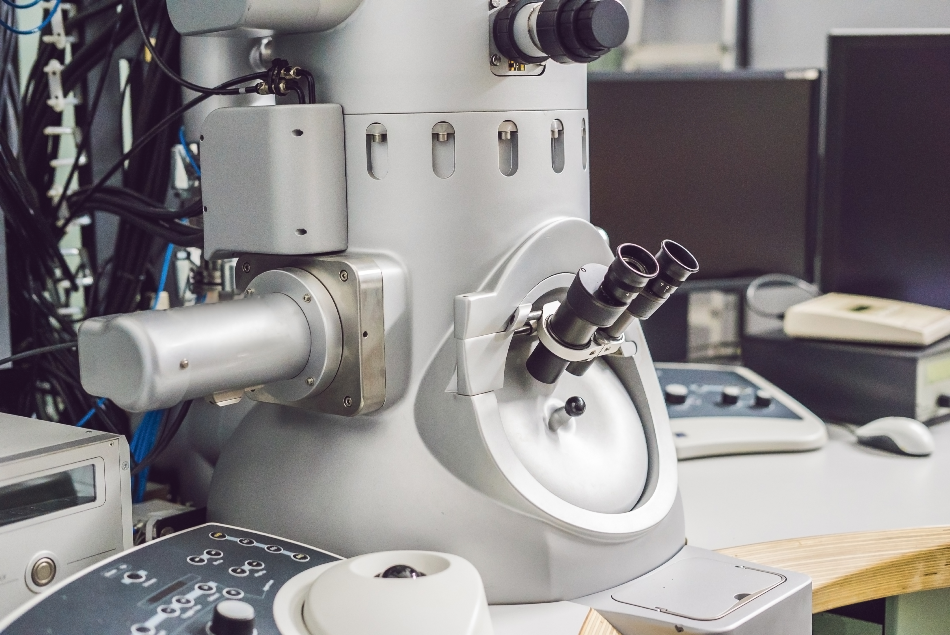The U.S. Department of Energy’s (DOE) Brookhaven National Laboratory, Euclid TechLabs LLC, the National Institute of Standards and Technology (NIST), and JEOL have won a 2019 R&D 100 Award for the development of the “Affordable Laser-free Retrofittable Stroboscopic Solution for Ultrafast Electron Microscopy.”

Image Credit: Elizaveta Galitickaia/Shutterstock.com
The annual R&D 100 Awards have been acknowledging progressive scientific ideas and technology since 1962. This year’s winner has been selected by a panel of judges comprising of more than 40 highly placed professionals from the field of academia, industry, and government. Paul J. Heney, Vice President and Editorial Director of R&D World, mentioned that these 100 winning products and technologies will a bring positive change in the industries, having an immense effect that would benefit society at large.
Transmission Electron Microscopy
Transmission electron microscopy (TEM) is considered an important tool for the determination of the atomic and electronic structure of various materials. The study includes the analysis of high-temperature superconductors, ferroelectric and ferromagnetic (spontaneous electric and magnetic polarization) devices, nanoscale quantum systems for neuromorphic (brain-inspired) computing, catalysts, and batteries. These are possible due to their high spatial resolution down to a fraction of an angstrom, or one hundred millionth of a centimeter. On the other hand, a conventional TEM has a video rate of roughly 30 frames per second, or 33 milliseconds, i.e., too slow to capture atomic vibration, lattice motion, charge transfer, ion transport, electric and magnetic switching, and other dynamic processes in these materials. This limitation is mainly due to the electron beam produced in TEM being continuous, rather than pulsed.
To overcome the above-mentioned drawback of TEM, a team of researchers at Brookhaven Lab replaced the lasers with an electron pulse system. For ultrafast TEM experiments, a team member introduced accelerator technology to “chop” the uninterrupted waveforms of electrons into ultrashort pulses down to 10 picoseconds with high repetition rates (megahertz to gigahertz) in stroboscopic mode.
In the stroboscopic mode, the pulses are continually cycled to create a time-resolved image, analogous to how film reels are made up of a series of individual pictures that when viewed in quick succession, appear to be a continuous motion. The rate of these pulses can be adjusted based on the natural time scale of the phenomenon of interest- for example, a metal-insulator transition or spin-wave propagation. This innovation has introduced a low-cost laser-free device that can be used to analyze the dynamic behavior of energy and biological materials over a very short period.
Developing the Electron Pulser
The team developed and constructed the electron pulser at Euclid. They have further tested the device in a TEM at JEOL USA headquarters and installed it in NIST and Brookhaven TEM, which operates at various voltages. This device has been used in different experiments to investigate its potential, including whether it can be used to probe ultrafast dynamics in materials with strongly correlated electrons and even in biological samples. The high-energy electron beams generally used in TEM are known to damage biological samples by breaking atomic bonds; however, if the broken bonds can self-heal in between the pulses, the radiation damage could be mitigated.
Team member Yimei Zhu, a senior physicist and leader of the Electron Microscopy and Nanostructure Group in Brookhaven Lab’s Condensed Matter Physics and Materials Science Division, said that this technology can perform time-resolved measurements and study how biological molecules react to external stimulation. He further stated that this device would successfully help researchers to study and analyze the microstructure, electronic structure, and spin states of functional materials in the required space and time domains.
Brookhaven and its collaborators and the other winners were recognized at the R&D 100 Awards gala event in San Mateo, California, on December 5, during the 2019 R&D 100 Conference. Since 1987, Brookhaven Lab has won 37 R&D 100 Awards for technologies including microscope optics, electrocatalysts, nanotexturing methods, and radiation detectors.
Source
https://www.bnl.gov/newsroom/news.php?a=116892
Disclaimer: The views expressed here are those of the author expressed in their private capacity and do not necessarily represent the views of AZoM.com Limited T/A AZoNetwork the owner and operator of this website. This disclaimer forms part of the Terms and conditions of use of this website.